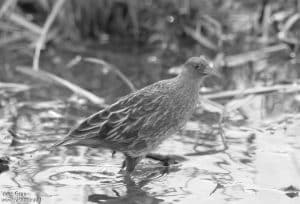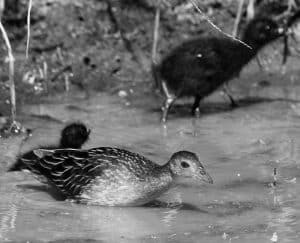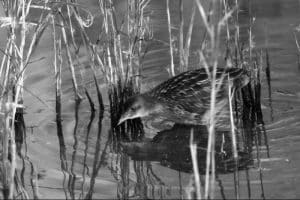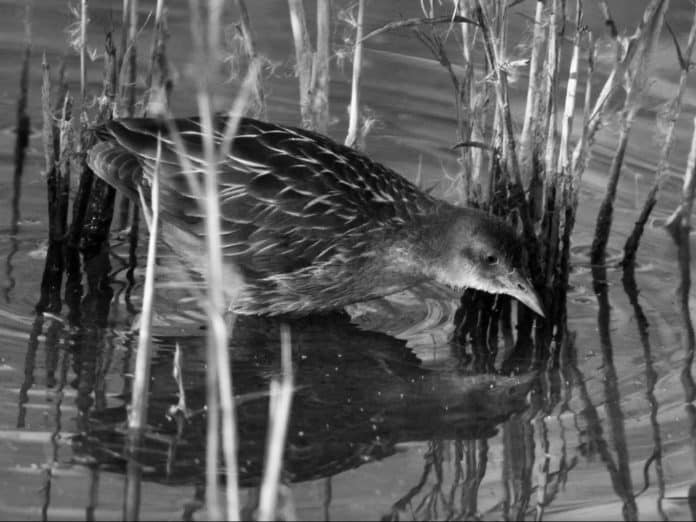Introduction to the striped crake in Tanzania
The striped crake in Tanzania (Aenigmatolimnas marginalis) is a small bird species that is native to the wetlands of East Africa, including Tanzania. This elusive bird, known for its distinctive black and white stripes, has captured the attention of birdwatchers and researchers alike. In this article, we will explore the habitat, physical characteristics, behavior, and conservation status of the striped crake, as well as the best places to spot this fascinating bird in Tanzania.
Habitat and distribution of the striped crake

The striped crake primarily inhabits the wetlands of East Africa, including marshes, swamps, and flooded grasslands. These wetlands provide the ideal environment for the bird, as they offer plenty of cover and abundant food sources. In Tanzania, the striped crake can be found in various regions, including the Serengeti National Park, the Selous Game Reserve, and the Kilombero Valley. It is also known to occur in neighboring countries such as Kenya and Uganda.
Physical characteristics of the striped crake
The striped crake is a small bird, measuring about 20-23 centimeters in length and weighing around 60-70 grams. It has a plump body, short wings, and a short tail. The most distinctive feature of the striped crake is its black and white striped plumage, which extends from the top of its head to its tail. This unique coloration helps the bird blend in with its surroundings and provides excellent camouflage in the dense vegetation of the wetlands.
The striped crake has a long, slender bill that is adapted for probing in the mud and vegetation for small invertebrates, such as insects, worms, and snails. It also has long legs and toes, which enable it to navigate through the marshy terrain. Despite its small size, the striped crake has a loud and distinctive call, which consists of a series of high-pitched whistles and trills.
Behavior and breeding patterns of the striped crake
The striped crake is a secretive and elusive bird that prefers to stay hidden in the dense vegetation of the wetlands. It is primarily active during the early morning and late afternoon, foraging for food and engaging in courtship displays. During the breeding season, which typically occurs during the rainy season, the male striped crake performs an elaborate courtship dance to attract a mate.
Once a pair is formed, the female striped crake constructs a nest on the ground, hidden among the grasses or reeds. The nest is a shallow cup made of grasses, leaves, and other plant materials. The female lays a clutch of 3-5 eggs, which she incubates for about 18-21 days. Both parents take turns incubating the eggs and caring for the young chicks.
Conservation status and threats to the striped crake
The striped crake is currently classified as a species of least concern by the International Union for Conservation of Nature (IUCN). However, the bird faces several threats to its survival, primarily due to the loss and degradation of its wetland habitat. Wetlands are being drained and converted for agriculture, urban development, and other human activities, leading to a decline in suitable habitat for the striped crake.
In addition to habitat loss, the striped crake is also vulnerable to predation by introduced species, such as feral cats and rats, which can prey on the eggs and chicks. Climate change and pollution are further threats that can impact the availability of food and water sources for the bird. Conservation efforts are underway to protect and restore wetland habitats, raise awareness about the importance of the striped crake, and promote sustainable tourism practices.
Research and studies on the striped crake in Tanzania

In recent years, there has been a growing interest in studying the striped crake in Tanzania. Researchers and ornithologists have been conducting field surveys, monitoring populations, and studying the behavior and ecology of this elusive bird. By understanding the habitat requirements, breeding patterns, and migration routes of the striped crake, scientists can develop effective conservation strategies to ensure the long-term survival of the species.
Best places to spot the striped crake in Tanzania
If you’re an avid birdwatcher or wildlife enthusiast, Tanzania offers some excellent opportunities to spot the striped crake in its natural habitat. The Serengeti National Park, with its vast wetlands and grassy plains, is one of the best places to observe this elusive bird. The Selous Game Reserve, known for its diverse birdlife and pristine wetlands, is another hotspot for striped crake sightings. The Kilombero Valley, located in the eastern part of Tanzania, is also a great destination for birdwatching, with its extensive wetlands and rich biodiversity.
Tips for birdwatching and photographing the striped crake
Spotting and photographing the striped crake can be a challenging task due to its secretive nature and preference for dense vegetation. Here are a few tips to increase your chances of a successful sighting:
- Visit wetland areas during the early morning or late afternoon when the striped crake is most active.
- Look for areas with dense vegetation, such as reeds, grasses, and marshy patches, where the bird is likely to hide.
- Listen for the distinctive call of the striped crake, which can help you locate its presence in the wetlands.
- Be patient and observant. The bird may take some time to emerge from its hiding spot, so stay still and watch for any movement.
- Use binoculars or a telephoto lens to get a closer look at the striped crake without disturbing its natural behavior.
- Respect the bird’s habitat and avoid any disturbance or destruction of the wetlands.
Other bird species found in the East African wetlands
The East African wetlands are not only home to the striped crake but also host a wide variety of other bird species. From colorful kingfishers and herons to majestic storks and eagles, the wetlands offer a rich and diverse birdlife. Some notable species include the African fish eagle, the grey crowned crane, the pied kingfisher, and the shoebill stork. Exploring the wetlands of Tanzania is a birdwatcher’s paradise, offering endless opportunities to encounter these magnificent avian creatures.
Conclusion

The striped crake is a fascinating bird that adds a touch of mystery to the East African wetlands. Its distinctive black and white stripes, secretive behavior, and unique habitat requirements make it a sought-after sighting for birdwatchers and nature enthusiasts. By understanding the importance of wetland conservation and supporting sustainable tourism practices, we can ensure the long-term survival of this beautiful bird and its precious habitat. So, grab your binoculars, head to Tanzania, and embark on a memorable journey to unravel the mysteries of the stripes in the East African wetlands.

































